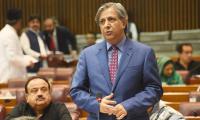Much has been written about how the China-Pakistan Economic Corridor (CPEC) project will turn Pakistan’s fortunes around merely by being a transit for raw materials and energy resources to western China. There is the notion that Gwadar will become a ‘new Dubai’, a glimmering El Dorado on the shores of the Arabian Sea and the source of untold riches. Indeed, many pictures of a supposed future Gwadar are actually of Hong Kong, the epitome of modernity with its iconic towering skyscrapers. However, what is required is a ‘new Rotterdam’, a vast container port stretching out endlessly into the desert with the purpose of getting goods in and out of the country. Gwadar should therefore be considered more of a gateway to landlocked Asia due to the CPEC available to also serve the Central Asian states via Afghanistan. These states could be encouraged to use Gwadar by offering an area of the container storage facility for their exclusive use if they in return used Pakistan National Shipping Corporation (PNSC) vessels for transport.
While containerisation is the hallmark of maritime trade today, however, there is still scope for further opportunities for Pakistan (and others) to expedite exports, (especially to the Arabian Peninsula), by establishing a cargo ferry service. Combined road/sea transportation could be considerably cheaper than air freight for some foodstuffs for example that could travel via Gwadar, embarking on a ferry to an peninsula port for onward travel via its road network, while facilitating Middle Eastern trade with Pakistan, China and Central Asia in reverse. There would also be further opportunities for Pakistan to exploit if such a ferry service was established. It would also provide Pakistan with a strategic sealift capability through the use of these vessels as naval auxiliaries to be chartered or requisitioned in times of crisis, such as environmental/humanitarian/disaster relief operations, support of regional UN missions, and military support to regional allies.
No opportunity to expand the opportunities brought by the CPEC project should be overlooked, which is why the operation of such a ferry service should be carefully considered. In terms of the secondary use of such vessels that need is very clear. Pakistan is a responsible state that desires regional peace and stability, and has a stake in supporting this throughout the Indian Ocean Region (IOR) and beyond. Consequently, it has been the largest contributor of peacekeeping troops to the UN for some years and has participated in some important regional missions, such as those in Somalia and other African states. In terms of international disaster relief operations in the region it has always stood ready to help when the need arose, and perhaps the most high profile of these missions was in the aftermath of the 2004 Asian tsunami that devastated parts of Indonesia, Sri Lanka, and the Maldives plus affecting other IOR littoral states. Pakistan’s navy was the first to respond due to the frigate Tippu Sultan and replenishment vessel Nasr being in the Maldives port of Male at the time the tsunami struck, and both vessels immediately began relief operations.
The navy quickly responded to the wider disaster by sending further ships and elements of the Marine Expeditionary Force to Sri Lanka and Indonesia to participate in the international relief efforts. These missions could have benefitted from a strategic sealift capability. The type of vessel needed to be able to fulfil this dual role is very specific as it would demand a roll on/roll off (RoRo) type ship able to directly embark/disembark vehicles. Trucks could simply be driven on at Gwadar and driven off at their destination, which would offer a far quicker turnaround time than sending freight via containership (that would require timely loading/unloading as well as processing at each end of the journey). When operated by the navy in support of its operations, both tracked and wheeled armoured vehicles could be directly embarked/disembarked using the quayside as long as port facilities were available. For disaster relief operations these could even include Marines’ hovercraft for ease of movement, and Army engineering vehicles to clear away damage and begin the process of rebuilding local communications and health infrastructure, or at least aid in providing temporary shelter. The RoRo vessels would therefore be operated as a combined asset for the whole military, not just the navy.
Presently however PNSC only operates a fleet of four tankers and five bulk carriers. It has not operated passenger vessels for very many years, and does not seem to have ever operated anything like a sea-going RoRo vessel. However, PNSC is expanding and has experienced an impressive turn around in its fortunes since 2001. There should be no reason that additional services should not be considered as part of PNSC’s ongoing expansion so Pakistan can take its place as a great maritime trading nation.
Such vessels could also be constructed domestically. The facilities at Karachi Shipyard and Engineering Works (KSEW) require modernisation. In support of economic advancement, plus Pakistan’s desire to preserve regional peace and stability therefore, serious consideration should be given to the above possible uses of RoRo type vessels.
DEO briefed the participants on the ongoing drive for the enrollment of children
Air ambulance would be deployed for emergency transfer of patient: says Sarfraz Bugti
Senator Palwasha Khan criticized the behavior of the SIC during the president’s address to the Parliament asserting...
Chief Justice Aamer Farooq heard the petition filed by the former president IHC Bar Council Nayab Gardezi through his...







